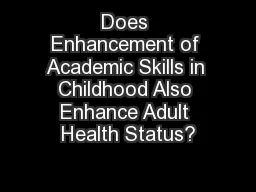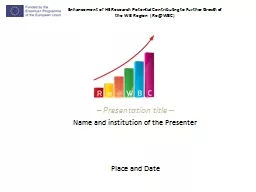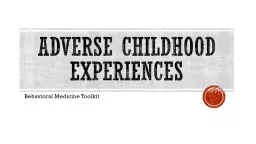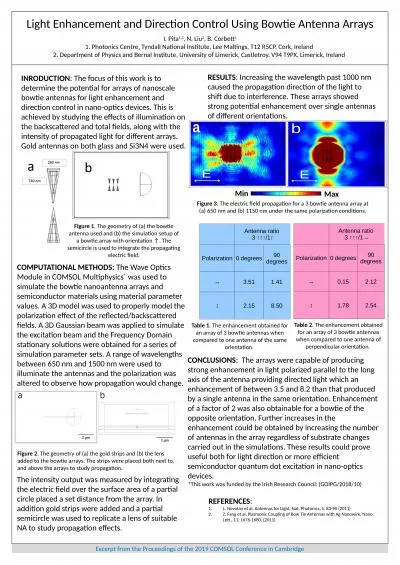PPT-Does Enhancement of Academic Skills in Childhood Also Enhance Adult Health Status?
Author : min-jolicoeur | Published Date : 2018-12-24
Frances Campbell Elizabeth Pungello Thomas Keyserling R Grant Steen University of North Carolina at Chapel Hill Purpose Does Enhanced School Readiness Affect Adult
Presentation Embed Code
Download Presentation
Download Presentation The PPT/PDF document "Does Enhancement of Academic Skills in C..." is the property of its rightful owner. Permission is granted to download and print the materials on this website for personal, non-commercial use only, and to display it on your personal computer provided you do not modify the materials and that you retain all copyright notices contained in the materials. By downloading content from our website, you accept the terms of this agreement.
Does Enhancement of Academic Skills in Childhood Also Enhance Adult Health Status?: Transcript
Download Rules Of Document
"Does Enhancement of Academic Skills in Childhood Also Enhance Adult Health Status?"The content belongs to its owner. You may download and print it for personal use, without modification, and keep all copyright notices. By downloading, you agree to these terms.
Related Documents














